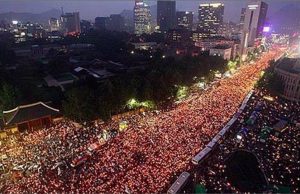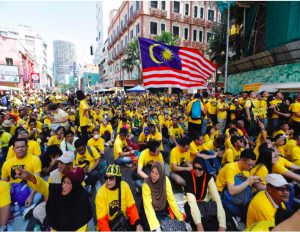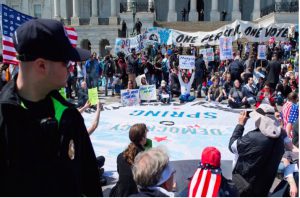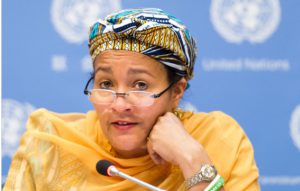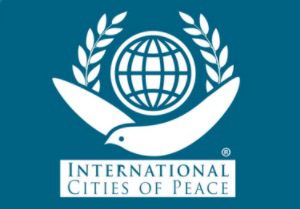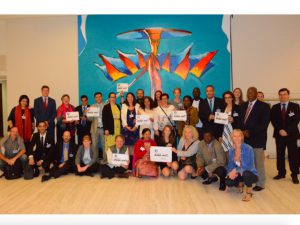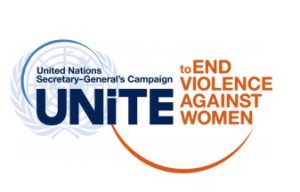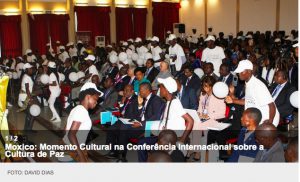TOLERANCE AND SOLIDARITY .
An article by Alejandra González Hernández and Víctor Alfonzo Zertuche Cobos for openDemocracy (Translation by Andrea Janet Serna Hernández and Itzel Cruz Ruiz)
The struggle of Cherán is one of the most important emerging social movements of recent years in Mexico, both for its visibility and for the political, economic, social and cultural alternative that the community is building. It is a lively movement, with its campfires still burning, still fighting and resisting. Its experience has inspired indigenous communities throughout Mexico, who seek respect for their rights, territory, institutions and culture.

The second Council took charge on September 1st, 2015.
Authors’ photograph
(click on photo to enlarge)
San Francisco Cherán, is an indigenous community of the Purépecha town located in the state of Michoacán, Mexico. It has a territorial extension of 221,000 square kilometers and a population of 14,245 inhabitants, making it the largest Purépecha community in terms of territory. It originally counted some 27,000 hectares of forest. The main economic activities are agriculture, livestock farming and the production of wood and cork products.
Cherán is the only municipality inhabited mainly by indigenous Purépecha, a culture that seeks to preserve its identity and cultural traits, which are closely linked to concerns about the fertility of the land and care of resources. The community of Cherán has occupied this territory since before the colonization process. It has conserved its own institutions to organize itself in the political, cultural, economic and social sphere, and this has been reflected in its social dynamics. The inhabitants of the municipality have combined their own practices with the national law, in a dual law regime.
However, recently, particularly between 2008 and 2011, this community experienced one of its worst periods of crisis due to the insecurity and violence arising from the municipal authorities’ complicity with organized crime. They cut down a wide swathe of Cherán’s forests unannounced and extorted, threatened, kidnapped and murdered the villagers. They carried out these activities in broad daylight.
The state and federal authorities showed no will to address the resulting mayhem and violence suffered by the community and to protect the common patrimony of the people (territory, forests and water). The Purépecha community of Cherán decided to take the problem into their own hands.
Beginnings of the movement
The movement of the indigenous community of Cherán emerged at dawn on April 15, 2011. Ordinary people decided to confront the criminal organizations that came down from the hill with several vans loaded with wood. Thus began the resistance of the Purepecha community of Cherán. Women and men, children and adults concentrated on the site named “Calvary” to defend life, their security, territory, forests and the dignity of the community. Regardless of political affiliation, belief or religion, all the inhabitants of Cherán joined together on that April 15 without thinking where their insurrection would lead them.
From that day on, the “comuneros” decided to organize under their own scheme, driving away organized crime. After the expulsion of the municipal authorities, an “organizational structure” composed of a general coordination and 12 commissions took over the control of the entire community. They built barricades on all the accesses to the municipality and started to establish guard posts to enable comuneros to defend themselves in the four neighborhoods of the municipality. Some 200 campfires – of which several have remained active up to this day – were set up at these guard posts and became the symbols of the resistance, and the will of the comuneros to free themselves from organized crime and corrupted authorities. With the slogan “for the defense of our forests, for the safety of our comuneros” they aimed at defending their natural resources, valued as a heritage and as a sacred good of the community.
At the same time, the problem of Cherán became visible to several sectors of Mexican society and resonated with them. Similar problems were suffered by indigenous communities throughout the country, including the devastation of natural resources, human rights violations and social exclusion. All of this was aggravated by the involvement of organized crime and the lack of will or any action on the part of the authorities to solve the situation.
From the spaces known as “campfires” and the “organizational structure”, the comuneros began to discuss, to reflect on alternative projects and actions to solve the problems they were suffering. They quickly identified that political parties did not guarantee the security and cultural continuity of Cherán. On June 1, 2011, the community general assembly decided not to take part in the elections for the state governors and legislators and the municipal presidents that were to be held in 2011 and not to allow the installation of polling stations in the municipality. Instead, they decided to exercise their right to appoint their own authorities through their own normative systems.
The rights to autonomy and self-determination had been recognized by international treaties as well as by the national legal system. Cheran thus decided to move forward along this path and to eliminate the local political party system, with the slogan of “No more political parties in the community”. It thus asked the electoral institute of the state of Michoacán to organize the appointment of new municipal authorities of the community under the traditional system of “uses and customs”.
The state authorities tried to stop the movement of Cherán. In September 2011, the Electoral Institute of Michoacan issued a negative response, declaring it had no authority to authorize such a mode of elections. To the social and political mobilizations that were the bases of the movement until then, the comuneros now decided to add the adoption of a legal strategy to defend its autonomy and alternative project.
The legal strategy of the movement
Cherán decided to mobilize the law as a political and legal strategy. They used state (and hegemonic) law in a “counter-hegemonic sense” to materialize their struggle for self-determination and to form their self-government. In response to the EIM (Electoral Institute of Michoacan), the community decided to judicialize its right to “autonomy and self-determination”. They demanded in the courts the right to choose their own authorities based on the system of “uses and customs”, through a “Trial for the Protection of the Political-Electoral Rights of the Citizen” in the Electoral Tribunal of the Judicial Power of the Federation (ETJPF, or TEPJF by their initials in Spanish).
Two months later, on November 2, 2011, the Superior Chamber of the ETJPF ruled in favor of the indigenous community of Cherán. It recognized that Cherán had the right to request the election of its own authorities through its “uses and customs” and ordered the EIM to organize this election, after free and informed consultation with the entire community.
(Article continued in right column)
(Click here for the Spanish version of this article)
Question for discussion
The understanding of indigenous peoples, Can it help us cultivate a culture of peace?
(Article continued from left column)
Following this triumph of a counter-hegemonic use of state law and the ETJPF decision, a “free, prior and informed consultation” was organized in the community to decide whether or not it wanted to appoint its new authorities through its “uses and customs”. The result of the consultation was positive. In January 2012, a democratic election was duly held, giving rise to the constitution of a new government figure: the first indigenous municipal government, called “Mayor Council of Communal Government” (Concejo Mayor de Gobierno Comunal), composed of 12 “K’eris” (seniors) chosen among the “comuneros” and “comuneras” (members of the community), three for each of four districts. There is no hierarchy among them, that is to say, all occupy the same position within the communal government. They were appointed for a 3-year period 2012-2015.
The first time, a “uses and customs” election was organized by the EIM and by the community itself, respecting its own procedures, through a kind of ritual, without ballot boxes and without political parties. It differs from the model of “uses and customs” in the Southern Mexican state of Oaxaca, as the later system only serves a procedural function in the election of its authorities. In the case of Cherán, there was a “transformation in the structure, logic and relations of the municipal government”, when the hierarchical figures of “president, elected representatives and councillor” disappears and the government becomes a genuinely collegial body.
The new communal government
Following these elections, the seat of the city council or municipal palace was transformed into the “Communal House of Government”. The police were replaced by a “community round”. The municipal president, representatives and councillors take part in a “Common Council of Communal Government”; Likewise, “operational councils” have been constituted as well as “commissions” for civil affairs, social development, procurement and conciliation of justice, education, culture, health, identity, campfires, water, cleanliness and youth. All them are aware that the maximum authority is the “General Assembly” composed of all the inhabitants of Cherán.
From April 2011 to February 2012, Cherán’s social movement moved considerably forward, both in its political and legal struggles. Winning the right to elect its own authorities and exercise their right to self-determination allowed them to establish a solid basis – the communal government – for the continuation of the emancipatory movement. The path towards autonomy was set up. But the journey went far beyond constituting a government under the system of “uses and customs”.
Other legal struggles of the movement and the second Council
In 2012, shortly after the appointment of the first mayoral council and already as Cherán’s authorities, the community returned to the courts to start another trial, this time in the Supreme Court of Justice of the Nation (SCJN), against the Governor and the Congress of the State of Michoacán. The latter had overhauled the Political Constitution of this region in matters of indigenous rights without having consulted the Cherán community, thereby overlooking another of the core rights of indigenous peoples and communities.
The ruling given by the SCJN in the trial of 2014 secured the dual character of Cherán, as both a municipality and as an indigenous community. This was officially recognized for the first time. As a result, the tribunal also established that in its capacity as an “indigenous municipality”, Cherán must be consulted on all legislative and administrative matters that interest or affect them as a community and as an indigenous municipality.
The issues brought to trial by Cherán and given legal backing by the highest courts in Mexico represent a major achievement. However, despite these judicial successes that have ratified the indigenous rights of the community, lawmakers in Michoacán have refused to amend the laws on matters integral to the municipality which involve recognition of Cherán’s indigenous municipality. Likewise, in electoral matters, the elections and authorities by “uses and customs” have also not been recognized.
Given the refusal of the state to cooperate, Cherán has continued to resist through communal organization in its campfires, neighborhood assemblies, and general assembly. Comuneros and comuneras get involved in the decisions of their community and support their local authorities. In 2014, Cherán had to go back to court once more, to remind the authorities of the rights it had won. Following that trial, the process of elections by “uses and customs” has finally been incorporated into the Electoral Law.
In 2015, Cherán’s struggle succeeded in integrating “previous, free and informed consultation” into state law. It prevented the state Congress from approving a “Law of Mechanisms of Citizen Participation” which did not recognise the consultation rights of indigenous peoples and communities. This mechanism is essential to ensuring communities’ participation in decision-making processes through their traditional procedures. Cherán made the consultation “binding”, which has opened a door for all indigenous communities in the state of Michoacan to get their voices heard in decision making processes
2015 was also the year of the appointment of the second Mayoral Council of Communal Government. The community decided to continue with its project of autonomy, self-determination and self-government. The political parties tried to interfere in the process of the renewal of the Council. Their failure to do so and the successes of Cherán in the tribunals gave considerable strength to the second election of the local authorities and to the second Council of Communal Government that took charge on September 1, 2015.
5 years of resistance and struggle
On April 15, 2016, the movement of Cherán celebrated its fifth anniversary. They organized an event with a strong cultural dimension and forums of dialogue fostering conversations on topics such as dispossession and war against the peoples, women and territory, autonomy, education for the defense of the territory. The celebration was closed with an event on the main square of the community, where the inhabitants remembered their dead companions and recalled the difficult road that they had travelled, the fear of living under insecurity, the impotence they felt when their forests were devastated. They also remembered the purpose of their struggle, a movement “for justice, security and the reconstitution of their territory”.
The movement has found many allies and support, notably among indigenous communities and progressive movements in Mexico. It has notably been accompanied in its struggle by the “Collectivo Emancipaciones”, that gathers young researchers who share a “political position committed to progressive social movements and from judicial support of social processes where the defense of human rights is relevant”. Since 2011, this Collective has been providing judicial support to the indigenous community of Cherán and has been working benevolently with the community as well as with other indigenous communities in the state of Michoacán.
To build and rebuild a lifestyle based on a communal government through its “uses and customs” has been the major task of these five years. The road has not been easy. The community continues to face a broad list of systemic enemies including the administrative bureaucracy, political parties, organized crime and state resistance to recognizing the rights of indigenous communities. The achievements of the community of Cherán remain under constant threat.
(Thank you to Janet Hudgins, the CPNN reporter for this article)
